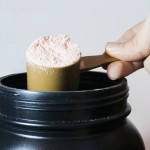 iStock
iStock
How young is too young when it comes to weight training?
There is a prevailing myth about the dangers of starting weight training at an early age that doesn’t die. Basically, it says that premature weight-training could stunt growth and make kids more prone to injury.
But is it actually true?
Contrary to popular opinion, weight training doesn’t actually stunt anything in teens. (Well, it does stunt one thing, but it’s a good thing. More on that later.) And kids are no more prone to injury than your average adult. In fact, probably less so thanks to youthful resilience. (Damn these brittle 30-something bones of mine.)
In fact, many sources — including the Australian Sports Commission — say that strength training during teen years is not only safe, but recommended to teach coordination, stability and even ward off osteoporosis.
So where did all the misinformation come from?
Apparently, it all stems from a 1964 paper tabled by a team of Japanese researchers called ‘Obstructed growth in children’s bones due to excessive labour in remote corners’ that was, strangely, published in the Proceedings of International Congress of Sports Science. Because when you think child labor you immediately think ‘sport’, right?
The paper’s authors, Kato and Ishiko, spent time in remote parts of Japan studying the lives of local child workers. According to their findings, children who performed heavy labour were found to be incredibly short in stature.
But what the paper also stated was that the same “short” children were not only performing “heavy labour in mountainous villages for several hours a day” but did so while existing on a poor diet. An important detail that was, for some reason, overlooked in subsequent supporting arguments.
The jump was then made that strength and weight training could “damage the composition of the epiphyseal junctures, or ‘growth plates’ — the stuff that bone grows from until the body reaches its full height. And this wasn’t even based on any scientific findings, it was simply anecdotal to the original research.
So if it’s not bad, what then are the benefits?
According to a 1997 study by Fiona Morris from The University of Melbourne’s Department of Medicine, starting weight training at an early age can actually help prevent the occurrence of osteoporosis later on in life.
Over a 10-month period, 71 girls aged between 9 and 10 years took part in a high-impact, strength-building exercise program. The study found that the girls not only gained leaner, healthier muscle but also higher bone accrual and bone mass which is an “important contributor to the prevention of osteoporotic fracture in later years”.
But while weight and strength training for teenagers is perfectly safe, experts still suggest following some simple guidelines to minimise injury. Narelle Sibte from the Australian Sports Commission recommends that adolescents “initially perform one to three sets of 6-15 repetitions of a variety of exercises, beginning with a frequency of 2-3 days per week on nonconsecutive days”.
Steer clear of weight machines and instead start by focusing on bodyweight exercises — lunges, push-ups, pull-ups et al — before moving on to free weights like dumbbells and kettlebells further down the track.
The focus should be on completing full repetitions, as opposed to just increasing load. Going too heavy too soon can “put too much strain on young muscles, tendons and areas of cartilage”. As one expert suggests, it’s important not to “confuse strength training with weightlifting, bodybuilding or powerlifting. These activities are largely driven by competition, with participants vying to lift heavier weights or build bigger muscles than those of other athletes”. So if you find yourself being able to fly through a 15-rep set, add on another five reps as opposed to more weight. Or, add another day to your training program.
Sibte also suggests following the 10 per cent rule — “limiting increases in training frequency, intensity and duration to no more than 10% per week”. It’s also recommended that you seek some professional advice beforehand — checking in with your doctor to make sure your body is in good condition and then speaking to a personal trainer to discuss appropriate weights to use and the right way to use them.
Lastly, this is also the perfect age to get into good habits like warm-ups beforehand and stretching afterwards. This not only aids in recovery but will help prevent any possible injuries that could come from stiffness or overworking.
Liked this? Read these!
Got something to say? Get it off your chest here
The Juice Daily and Bodypass are Fairfax Media owned websites










